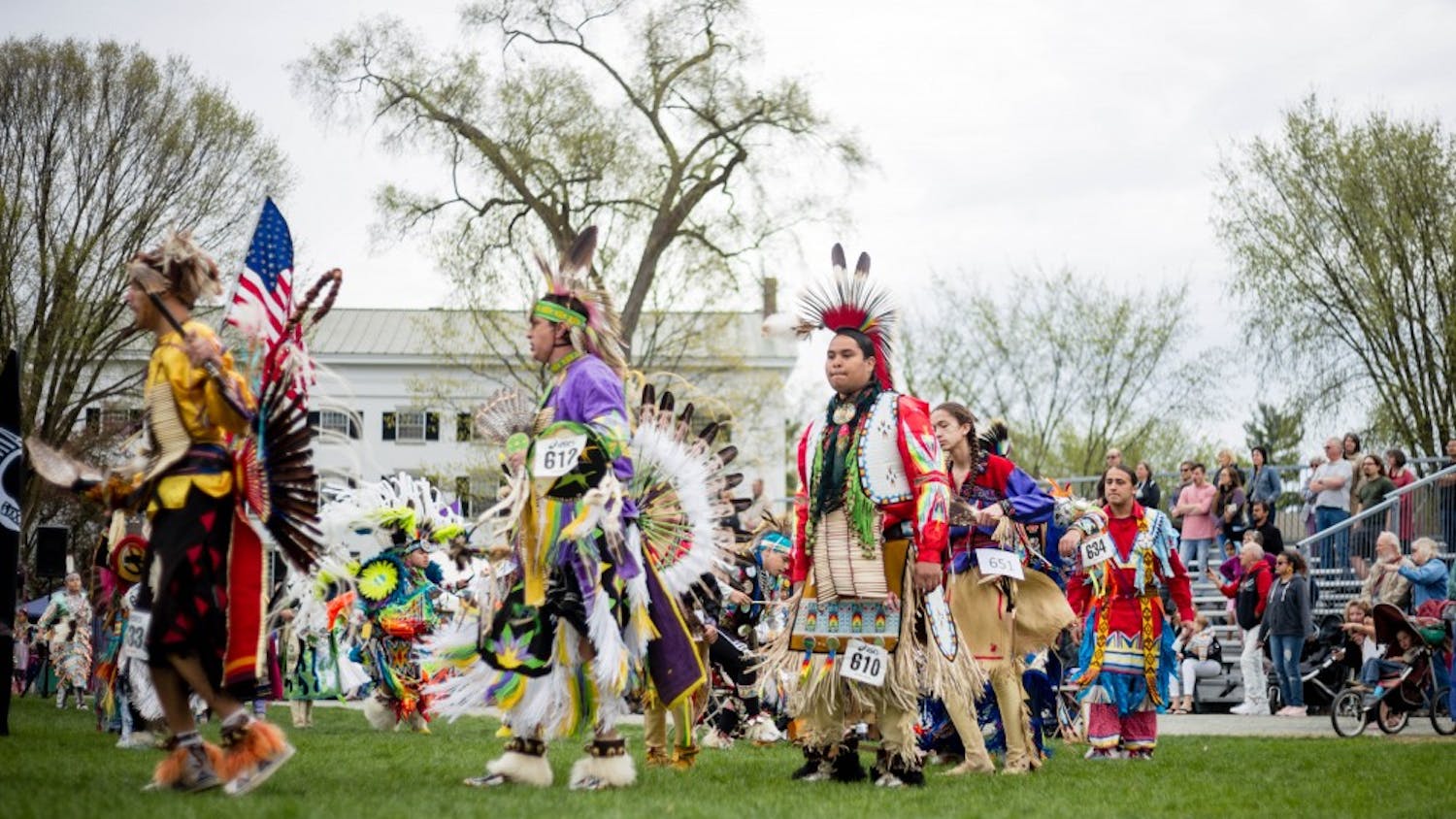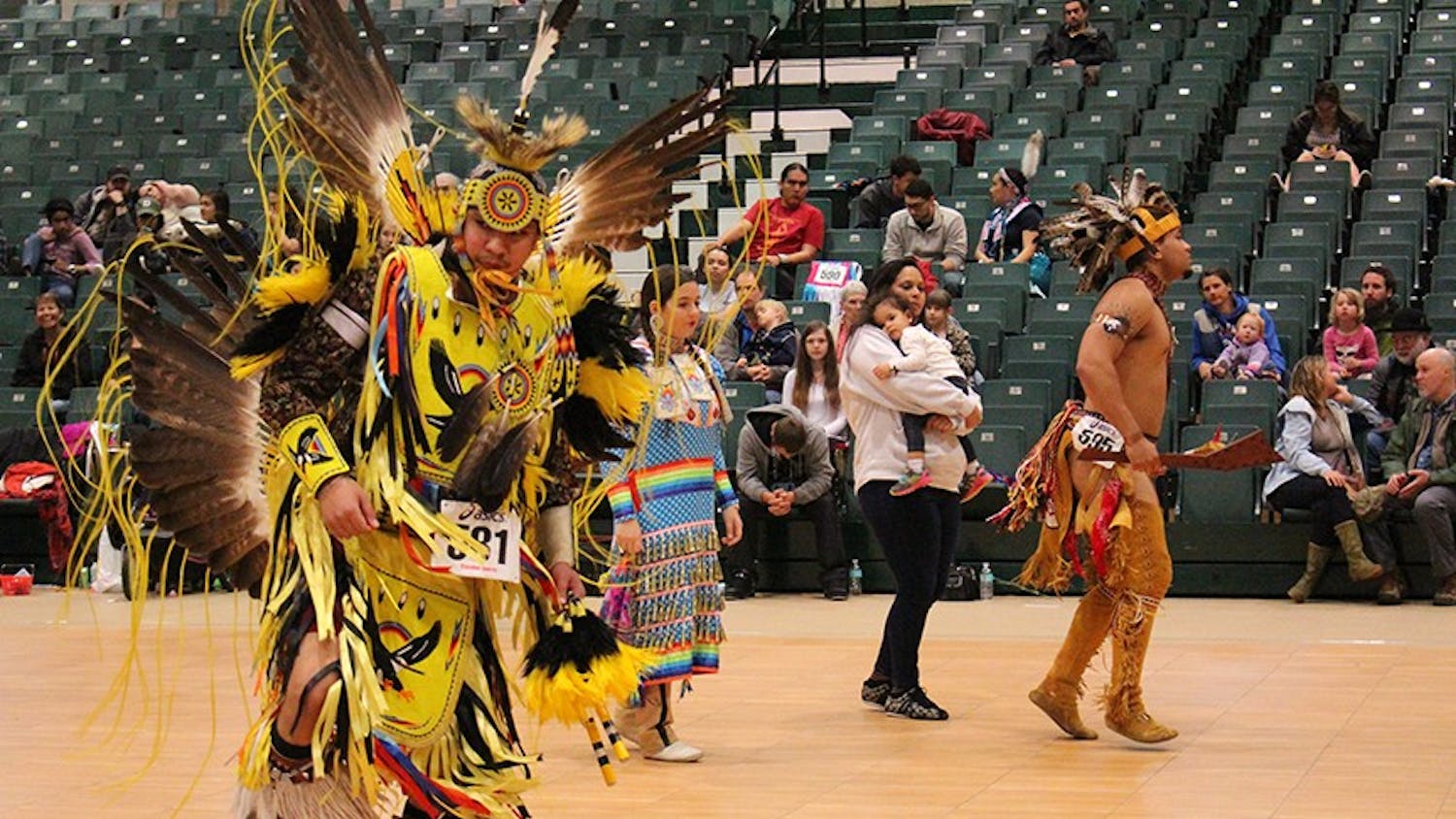Over 60 dancers from across the country came to campus on Saturday and Sunday to participate in Dartmouth’s 47th annual Powwow, a Native American cultural gathering. Typically, the event takes place on the Green, but due to rain concerns, this year’s powwow was held in Leede Arena. The event was organized by the Native Americans at Dartmouth student organization and was open to the public.
The Dartmouth Powwow is the one of six events traditionally allowed to commence on the Green and is the second-largest event of its kind in the Northeast, according to NAD’s website. Featuring dances set to music from six different drum groups, the Powwow provided a venue for the celebration of the cultural identity of Dartmouth students and of Native Americans who traveled to the event from across the country.
“Powwow is just generally a Native American social gathering with music and dancing,” event co-chair Skyler Kuczaboski ’21 said. “It’s a way to come together and just celebrate our culture and who we are as a people.”
Over the two-day event, dancers in traditional regalia participated in over a dozen dances from various Native American musical traditions. Mitchell Baker, a dancer from New Mexico, was appointed Head Man this year, while Kuczaboski served as Head Woman. The two participated in each dance at the event.
“It’s a really big honor to be asked to be Head Woman, just because it’s not something you take on by yourself,” Kuczaboski said. “It’s in recognition that you’re a good dancer, you know what’s going on in powwows, you’re an important community member to Dartmouth, and we want you to be part of this in a bigger way.”
Shelby Snyder ’21 and Kuczaboski were this year’s co-chairs of the Powwow Committee. According to Snyder, committee members and other volunteers raised over $62,000 this year, drawing funds from Office of the President, the Office of the Provost, the Native American Program, private donations and the sales of shirts and food.
She added that the committee was able to raise over $15,000 more than last year’s budget, allowing the group to plan more dances and better cash prizes for winners. Snyder said the increase in funding came partly from interest in the College’s 250th anniversary. She said she hoped the funding would continue past the anniversary.
“I think that if we want to see Powwow grow into what we know it can be, it’s going to take more than one or two years,” she said.
Twenty-six vendors were present at the Powwow, selling Native American jewelry, clothing and other items. Kuczaboski said the committee made an effort to attract vendors from the Northeast to support local artists and help local Native Americans artisans have more of a presence at the Powwow.
“We tried to give more of the vending spaces to indigenous people of this area, because I feel like they don’t often get as much recognition,” Kuczaboski said.
The Powwow incorporated group dances as well as specific “specials” meant to showcase one type of dance or to honor someone. NAD president Elsa Armstrong ’20 said she was excited to participate in a “special” meant for old-style jingle dancers, a style of dancing she learned as a member of the Ojibwe nation growing up in Saint Paul, MN.
“I’m really excited that we’re doing traditional jingle dancing this year because it’s what I know, and powwows usually have modern jingle dancing,” she said.
Another “special” new this year honored the cultural traditions of Native Americans from the Northeast and Canada, with a performance of the Smoke Dance traditional to the Iroquois Confederacy of New York. The Powwow also included a new team dance event in which dancers performed choreographed routines.
Snyder said she thought the event was a success. As a Native American from an urban setting, she said powwows have always been a way for her to connect with her culture without having access to traditional ceremonies.
“For me as a Native person to share that with other people and to continue that for myself — it’s just the best feeling,” she said.



